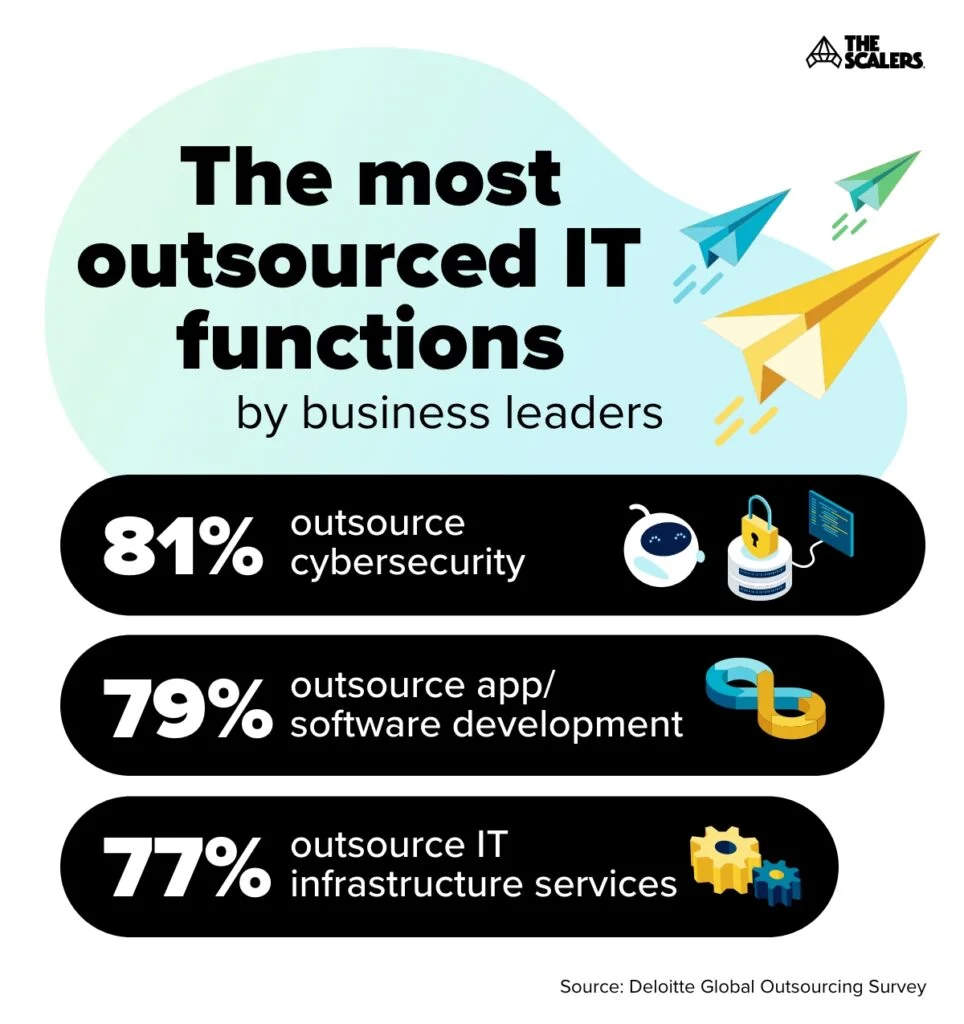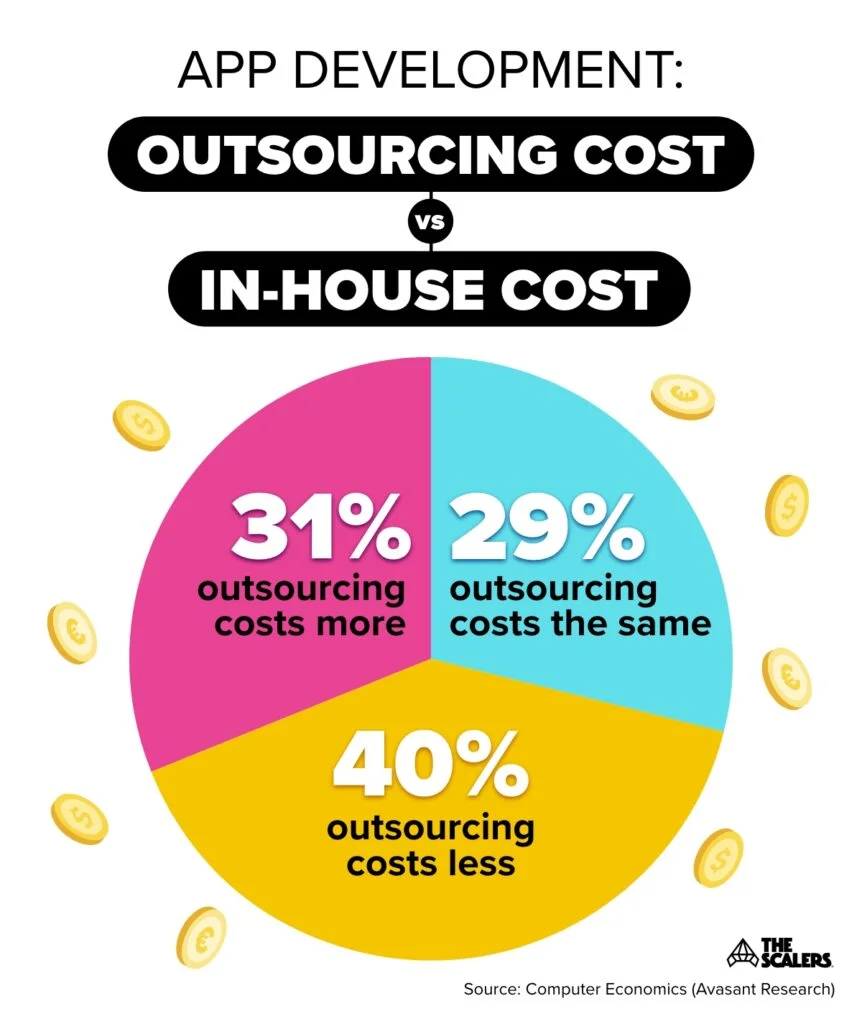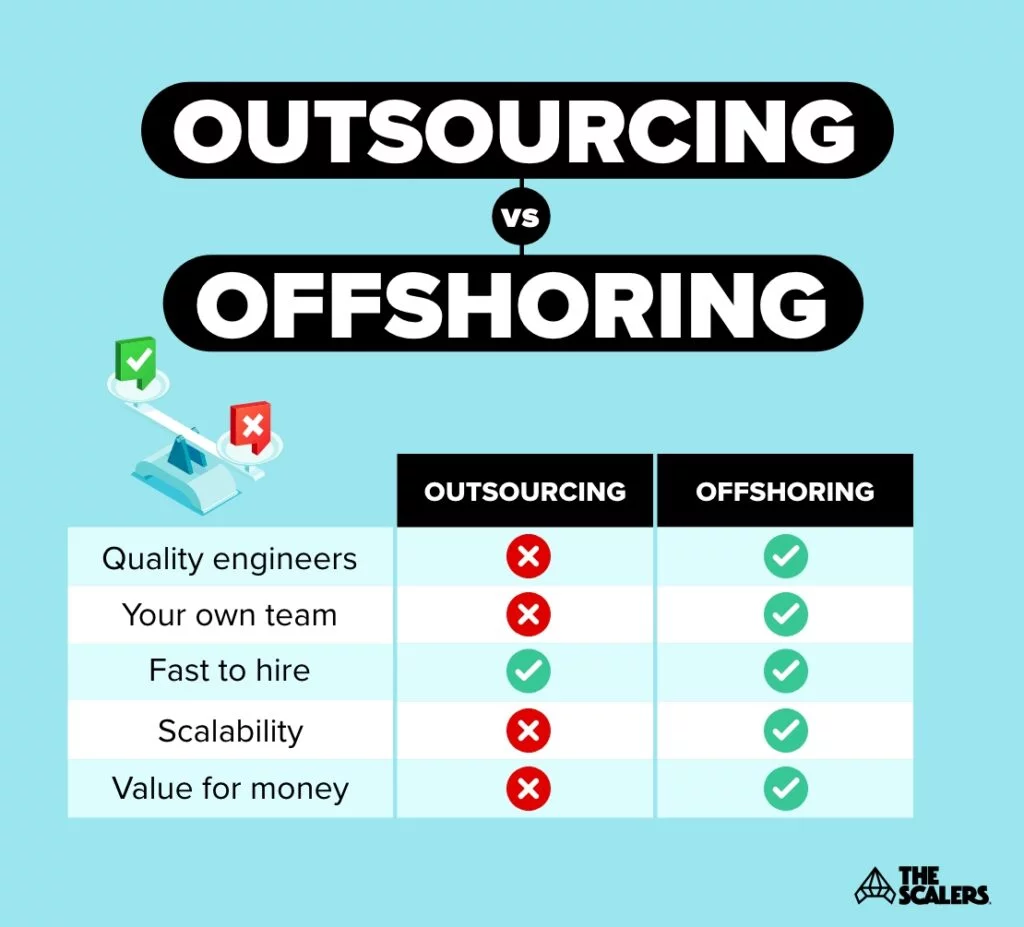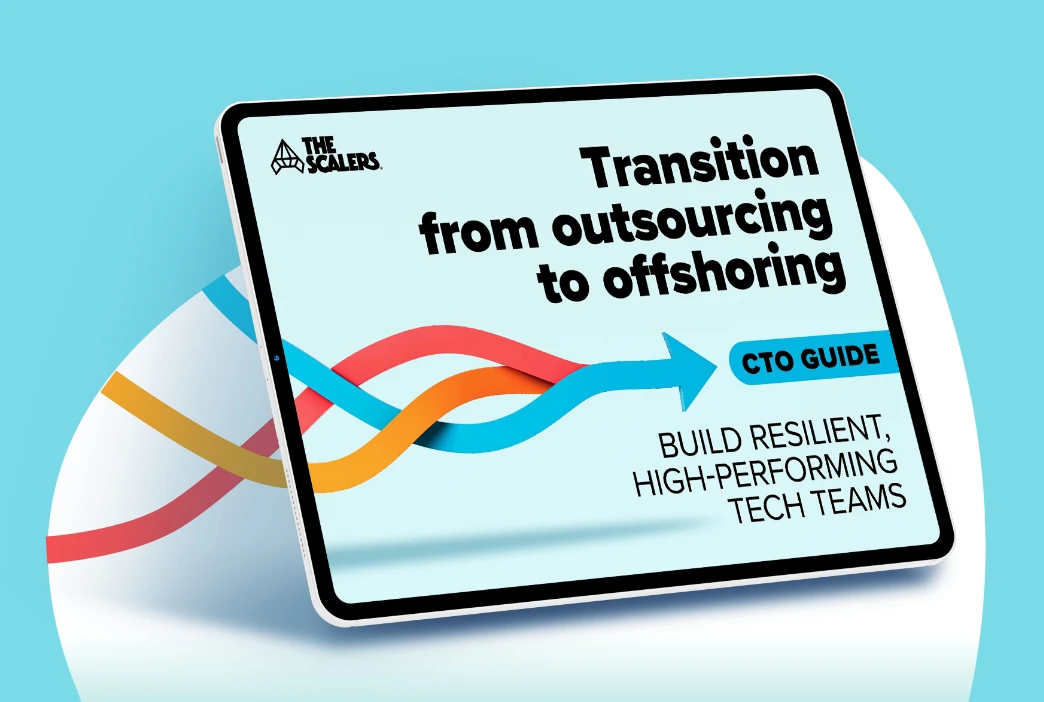5 problems with outsourcing and how you can overcome them all

While there may be many reasons for an organisation to outsource its operations, the primary motivation has always been cost-cutting.
Though that is an undeniable advantage, many problems with outsourcing are still overlooked.
In this article, we’ll discuss the common drawbacks of the model and how you can overcome them all effectively. You’ll find this article helpful if you’re considering outsourcing or alternative approaches like building an offshore development centre.
What is outsourcing?
To discuss outsourcing problems and solutions, first, it’s essential to understand what outsourcing is all about.
In the tech industry, outsourcing is the practice of engaging third-party vendors on a contract basis to deliver software. This means partnering with freelancers or companies hiring freelancers for one-off projects.
As mentioned earlier, it is one of the cheapest ways of getting work done and is usually used by companies looking to reduce operational costs over the short term.
Today, outsourcing is a popular business strategy with no signs of slowing down. According to Statista, the global revenue in the IT outsourcing industry is predicted to go up by about $265.3 billion from 2024 to 2028. That’s a 51.77% increase!

What are the common problems with outsourcing?
Now that you know the definition of this business strategy, it’s time to list the five most common issues in outsourcing.
1. Loss of control
When you outsource your development processes to a third-party vendor, you’re working with an external company, not your in-house team. In other words, you’re hiring a contractor, not an employee.
While you can provide details of what tasks or projects need to be accomplished, you have little to no control over the people working on the said project. Also, because the team isn’t working out of your local office, maintaining the control you desire over the entire project can be challenging.

Discover how to scale development teams in 2023 and beyond
DOWNLOAD EBOOK2. Exposure to data security threats
One of the primary concerns organisations have regarding working with distributed teams is cybersecurity and protecting intellectual data. Unfortunately, when you work with an outsourcing agency, it isn’t something that you can always control.
Typically, the developers you work with on a contract basis will also work simultaneously for other clients. In some cases, even your competitors. In such a scenario, ensuring that sensitive data is handled correctly and no security breach occurs can be a significant challenge.
Plus, outsourcing vendors often don’t stress the need for GDPR policies, procedures, and other technical safety measures, exposing your business to potential security threats. That’s one of the biggest problems with outsourcing.
DID YOU KNOW ?During the fourth quarter of 2023, data breaches exposed more than eight million records worldwide.Statista
3. Hidden costs
Earlier in the article, we discussed how organisations outsource to cut costs. However, it still doesn’t mean it will be as cheap as chips.
For starters, if an outsourcing partner is offering you access to engineers at 10-20% of the costs compared to hiring locally, then you best bet that the quality will be pretty low. And low-quality development means tech debt, project delays, and work that fails to meet your requirements.
Secondly, since outsourcing is usually a pay-as-you-go model, you might spend way more than you planned. Extra equipment, unaccounted overtime hours, and timeline extensions are hidden costs you must consider.
The infographic below illustrates that 31% of companies incur higher expenses when outsourcing app development than in-house solutions. Another 29% report equivalent costs.
This example highlights that outsourcing is not (always) a cost-effective solution.

4. Focus on quantity, not quality
Since the lowest price is the main driver in outsourcing, it’s common for businesses to choose vendors that offer the least expensive deal.
However, this means that the quality of the software delivered isn’t always the best. To meet deadlines and finish projects within the stipulated time, outsourcing vendors may randomly assign developers to the project. You don’t get to interview them, learn their technical background, or decide if they are best suited to deliver the project.
On the other hand, since these engineers work for multiple clients, they don’t have 100% customer focus, nor do they understand the entire scope of the project and the overall business. In such situations, the quality can be hit or miss.
5. Cultural barriers
Sometimes, focusing on reducing operational costs and simply getting the job done is easy.
However, if you choose to go the outsourcing route, you must keep in mind that one of the common problems with outsourcing is that there will be some cultural barriers that you may have to overcome.
Learn more about our model – the smarter way to go offshore
LEARN MOREThat’s because the engineers you hire are temporary teammates who don’t see or understand what your business stands for. They don’t need to embrace the unique DNA of your company or feel invested in your business’s short and long-term goals because they’re not in it for the long haul. This leads to a disconnect between your in-house and outsourced teams, leading to a culture gap that’s often hard to fix.
What’s the solution for the most common challenges in outsourcing?
The above-listed problems with outsourcing can be fixed with one simple solution: offshore software development.

Offshore software development is when you build a fully integrated team of developers in an emerging tech nation like India. The team is exactly like your local team, except they’re based elsewhere. They’re not outsourced help; they’re a value-adding extension of your existing workforce.
And that’s what we do at The Scalers: we help companies build, extend and scale world-class engineering teams in Bangalore, India.
Here’s how The Scalers’ model is different to others:
- The engineers you hire are a part of your team. As your offshore partner, we take care of the entire recruitment process, handle all the administrative and legal duties, and ensure that your offshore team is bought into your company culture.
- We have strict cybersecurity measures to ensure your IP is well-protected. We implement the latest security software, install security patches, and provide personal firewalls, antivirus protection, and antispyware protection. We also encourage our partners to conduct routine checks of encrypted data and invest in advanced firewalls to ensure their trade secrets are well protected. If you want to know more about data security, read our guide to cybersecurity for globally distributed teams.
- We have no hidden costs whatsoever. What’s in your contract is what you pay — it’s that simple.
- If you’re looking for the cheapest offshore vendor, we’re probably not a good fit for you. And that’s because we go above and beyond to help you build your offshore tech team. Our 7-step bulletproof recruitment process helps you gain access to the best tech experts India has to offer, and we’re 100% hands-on so that you can take your hands off. Quality is something we take very seriously.
- Our dedicated development team model promotes a strong and unified team culture — with your company DNA instilled throughout. You work with them the same as you do with your developers at home — there’s no difference. This also allows them to think about your product and services with a long-term perspective, contributing ideas that add value to your organisation.

How we helped a Legal SaaS company scale its Ruby on Rails team to deliver a groundbreaking product
DOWNLOAD CASE STUDYFinal thoughts: are you ready to go offshoring?
If you’re considering outsourcing, be vigilant about the potential pitfalls listed in the article.
Trying other strategies or models, like offshore development, can help you tackle these issues and keep operations efficient and high-quality.

If you want to know how we can build your dedicated offshore development team in India, feel free to reach out to us by filling out this contact form. One of our senior executives will get back to you shortly.
















